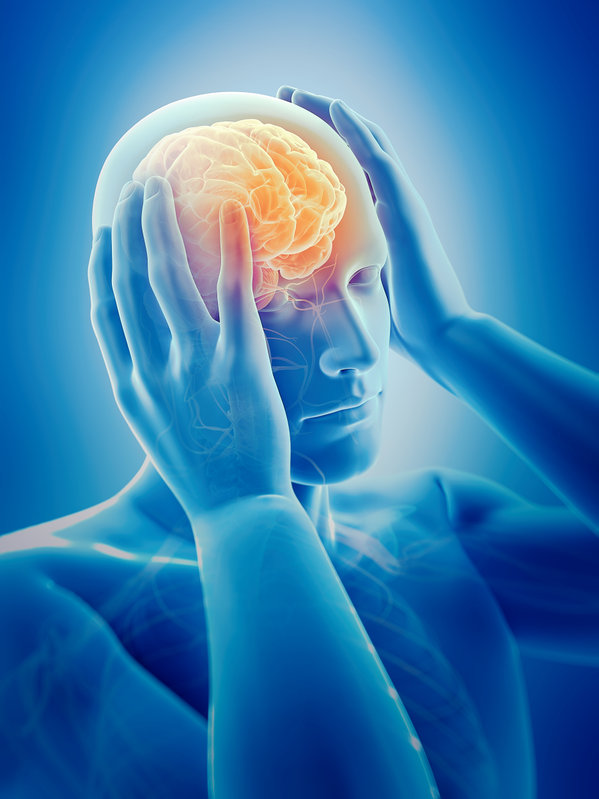This post continues our conversation about headaches in the correctional environment with a discussion of Secondary Headaches; headaches caused by other conditions.
Secondary Headache
Brain Abscess
A brain abscess may be the result of an existing extra-cranial infection; a blood-borne infection; intracranial procedures; or a penetrating head injury. The most common sources are infections of the lung, heart, ear, and sinuses. Approximately 25% of all brain abscesses have no identified cause. The headache from a brain abscess is typically only felt when it has grown large enough to push on the nearby brain tissue. Typically, the patient’s history includes a gradual onset of symptoms, including headache, nausea, lethargy, and fever, that worsen. If not diagnosed/treated, signs may progress to include lethargy, seizures, altered mental status, hemiparesis, and coma.
Brain Tumor
The signs of an intracranial malignancy occur because of increased pressure on tissue, obstruction of circulation and increased intracranial pressure. Progressive neurological deterioration is one of the most common signs of an intracranial tumor. Elderly patients may show a slow, progressive mental decline over months or even years that may be erroneously diagnosed as depressed or demented. The pain is generally felt over the area of the tumor, and is most often described as aching, dull and transient. Patients may exhibit new-onset seizures, vomiting without nausea implies increased intracranial pressure. Depending upon the location of the tumor, the patient may experience ataxia; disequilibrium; unilateral extremity numbness/paresthesia that may be slow or rapidly progress; hearing loss; tinnitus; visual disturbances; and abnormal vital signs, especially new onset hypertension.
Temporal Arteritis/Giant Cell Arteritis
Temporal Arteritis is characterized by chronic inflammation and giant cells in the larger arteries. It affects the arteries with elastic tissue, and causes narrowing and eventually occlusion of the lumen. The cause is unknown, and it affects males over the age of 50 more often than others. If left untreated, Temporal Arteritis can quickly progress to blindness that is usually irreversible. Patents with Temporal Arteritis complain that the pain of their headache is sharp and lancinating, like an “ice pick” is being used to stab them, and most often it is severe and debilitating. There are complaints of visual changes like blurry vision, diplopia, and visual field cuts, and eye pain, peri-orbital edema, and intermittent unilateral blindness. Patients also complain about scalp and jaw tenderness, facial pain, and tenderness upon palpation of the affected artery. Patients suspected of suffering from Temporal Arteritis should be sent to the Emergency Department via Emergency Medical Services as it is an emergent condition.
Medication Overuse/Analgesic Rebound Headache
Some patients who take analgesic or abortive medications on a frequent basis for recurrent headaches may develop medication over-use headaches. Some patients are more prone to having them than others, and the amount of medication used has some impact on the development of overuse headaches. Patients describe the headache as migraine-like. The patient’s history usually reveals that the patient had been taking the analgesic or abortive agent (acetaminophen, aspirin, compounds, codeine, triptans, etc.) frequently for recurrent headaches. Usually, the medication had been used 15 or more times a month for three or more months.
In our next post we will discuss the nursing evaluation of the patient with a complaint of headache
This series of posts about headache is based upon The Correctional Nurse Educator class entitled Headache for the Correctional Nurse.
Please share your experiences caring for patients with a complaint of headache in our comments section below.

Leave a Reply